
As Fletcher’s Task Force 17 was launching its strike on the MO Striking Force, RAdm Chuichi Hara was likewise sending his fliers out to hit the American carriers. The Zuikaku and Shokaku launched seven B5Ns to search to the south with a search radius of 250 miles, the aircraft departing at 0615. Hara and his staff fervently hoped that the search teams would turn in a better performance than their colleagues had the previous day when they misidentified the Neosho and Sims as important targets. After the launch of the B5Ns, the two carriers prepared their own strike mission with a total of 69 aircraft waiting on deck for word of the American flattops. Meanwhile at Rabaul a strike force of twin-engine bombers, all armed with anti-ship torpedoes, also waited for the signal to attack but poor weather and soggy landing strips threatened to prevent their takeoff.
The Americans were meanwhile well aware that a fleet action was imminent and had made preparations accordingly. After launching his own strike, RAdm Frank Fletcher turned tactical command of the Lexington and Yorktown over RAdm Aubrey Fitch, an experienced carrier commander whose ship-handling skills would be required in the event of an air attack. Eight F4F Wildcats were launched for combat air patrol duties, and they were soon joined by eight SBD Dauntless bombers as make-shift fighters.
At 0807 the Lexington’s CXAM radar detected a nearby contact, which soon disappeared from the operator’s scope. CAP fighters were vectored out to find the intruder but failed to find the contact in heavy cloud. Nevertheless Lexington Fighter Direction Officer Lt Frank Gill believed the task force had been sighted, and so informed Fitch and Fletcher. This aircraft was indeed Japanese, commanded by WO Kenzo Kanno. At 0822 he sent out a contact report, with an accurate position for the Task Force 17. Hara had the contact in hand soon afterwards, and ordered the strike to be launched. Planes began to take off at 0910 – a total of 18 A6M fighters, 33 D3A dive bombers, and 18 B5N torpedo bombers. As on the 7th, the force was under the command of senior aviator LtCdr Kakuichi Takahashi.
The American CAP fighters had a busy morning chasing down unidentified ‘bogeys’. Most turned out to be returning SBDs of the morning search, all of which lacked IFF and had to be visually inspected by F4Fs, all while Kanno continued to shadow. Another bogey appeared on radar at 0932, and F4Fs were again sent to investigate, but again failed to find it. At 1008, however, lookouts on the Yorktown visually sighted a large flying boat – two F4Fs sent to intercept quickly found a hapless Yokohama Kokutai H6K and shot it down in flames. Several other false alarms kept everyone on the ships of TF17 on edge. At 1012 Lexington launched an additional 10 SBDs as ‘anti-torpedo patrol’ – the Dauntlesses were expected to act as auxiliary fighters, protecting the carriers from the Japanese torpedo bombers.
At 1055, both carrier’s CXAM sets registered a large incoming contact about 70 miles from the Task Force. This was clearly the long-awaited enemy strike. Eight F4Fs were airborne, albeit with limited fuel remaining having spent the morning chasing bogeys. Nine additional Wildcats, then waiting on deck, were scrambled to join them. The newcomers were vectored out in two groups – five under LtCdr Paul Ramsey of VF-2, and four under LtCdr James Flatley of VF-42. Ramsey was ordered to high altitude, whilst Flatley was ordered low, making the assumption that he was being ordered to hunt for torpedo planes.
WO Kanno, still orbiting within sight of Task Force 17, spotted the incoming strike and flew alongside Takahashi to guide him in. Takahashi kept his D3As at high, whilst the B5Ns were ordered to descend to torpedo release altitude, with all eighteen of the escorting A6Ms supporting them. At 1109, just as the Japanese were breaking out of cruise formation and selecting their targets, Ramsey spotted them and led his men in a climb to reach appropriate altitude to attack the high-flying D3As. Flatley meanwhile failed to spot the lower B5Ns which had flown in above his division, unnoticed.
The Torpedo Attack
The torpedo bombers under LtCdr Shigekazu Shimakaze would make the first attack. He decided to concentrate mainly on the distinctive silhouette of the Lexington, which he misidentified as her sister Saratoga. Shimakaze directed 14 of his 18 B5Ns against her, whilst the remainder made a token effort against the nearby Yorktown.
One of Ramsey’s high flying F4Fs, piloted by Ens Edward Sellstrom, spotted the incoming B5Ns, and he decided to break formation and attack from high altitude. He quickly flamed a B5N, and was then in turn attacked by three escorting Zeros. In a furious melee, he claimed two A6Ms, whilst the rest of the Zeros fell upon the SBDs that were assigned to anti-torpedo duty. The Dauntlesses were exceedingly vulnerable to the much nimbler Mitsubishi aircraft, and soon four of the SBDs were shot down, although they claimed (erroneously) five A6Ms destroyed in return.
The B5Ns then began their torpedo runs, with 13 heading for the Lexington in two groups, one off each of her bows. Before reaching their release position they ran into another group of SBDs, a mixed group of VB-2 and VS-2 aircraft that had altitude advantage. These tore into Shimazaki’s planes, shooting down three of them and partially vindicating Sherman’s desire to use the SBDs in this manner.
The remaining 10 B5Ns carried out a textbook ‘anvil’ torpedo attack on the ponderous Lexington, which was unable to avoid all of the incoming Type 91 fish. Her first turn to avoid torps on the starboard bow put her in perfect position for the following attack on the port. Two B5Ns, under withering anti-aircraft fire from the carrier and her escorts as well as the pursuing VS-2 SBDs, veered off to attack the cruiser Minneapolis instead. They claimed hits on a ‘battleship’, but the Minneapolis escaped damage. The final three B5Ns dropped their torpedoes against the carrier from 700 yards out. One ran deep, but the other two ran straight and true. One hit the Lexington forward, the other amidships, killing several crewmen, fracturing fuel tanks, and damaging ventilation systems as well as locking the ship’s elevators at flight deck level. Several boilers had to be shut down, reducing the carrier’s speed to 24 knots.
The four planes sent to attack Yorktown had much less success. Her anti-aircraft crews succeeded in flaming one of the B5Ns before it could release, and the much nimbler Yorktown was able to turn away from the remaining three fish that were successfully released, and she escaped damage.
The Dive-Bomber Attack
D3As moved around to take position upwind of TF17, and so were not in a position to begin their attack until a few minutes after the torpedo attack had been completed. During this movement, Takahashi noticed fighters from VF-2 climbing to intercept, and order the low-flying Zeros to assist. These soon came across a division of CAP F4Fs, which assumed a defensive ‘Lufbery Circle’. The Japanese fighter pilots succeeded in typing up the CAP division, which was unable to reach the D3As before they began their dives.
Takahashi, like Shimazaki, split his aircraft between the Yorktown and Lexington – Takahashi himself leading 19 aircraft against the ‘Saratoga’. Lookouts onboard the Lexington, pre-occupied with the torpedo attack, had failed to spot the incoming D3As and did not warn of the impending bombing attack until the aircraft were well into the dives. Despite this, heavy anti-aircraft fire thrown up, with the result that only one hit was obtained – this on the corner of the flight deck near the bow, which detonated ammunition for a nearby 5-in gun position. Several near misses caused minor damage, but the ship remained capable of manoeuvring and her water-tight integrity was maintained.
The remaining 14 D3As targeted the Yorktown. Two VF-42 Wildcats were in position to intercept the dive bombers, and they followed the Aichis in their dive on the carrier, spraying machine-gun rounds at any aircraft that came in their sights. This may have had an effect on the accuracy of the Japanese attack, as only a single bomb struck the Yorktown despite none of the D3As being lost either to fighters or to anti-aircraft fire. This bomb hit the flight deck just forward of the midships elevator, and penetrated four decks before exploding. Additional near misses caused fragmentation damage and holed a fuel tank, causing oil to leak into the sea. Yorktown’s speed temporarily dropped to 25 knots, before her engineers effected repairs.
Their attack completed, the Japanese began to withdraw from the area. In doing so they had to run the gauntlet of American fighters and dive-bombers blocking their way. At low level, the B5Ns and their escorts ran in to a handful of VF-2 F4Fs and some SBDs from VS-2. Amongst the VS-2 contingent was Lt(jg) William Hall, whose aircraft was jumped by three Zeros. He aggressively counter attacked and, despite receiving severe wounds, claimed three enemy aircraft shot down. For this and his performance during the previous day’s attack on the Shoho, he was awarded the Medal of Honor. Another SBD was damaged, and whilst attempting to land aboard the Lexington was mistakenly shot down by anti-aircraft fire. The SBDs gave as good as they got, claiming several more of the withdrawing B5Ns.
Other fights raged between the Zeros that had be escorting the dive bombers and the American CAP. Two F4Fs simply failed to return after the mission with no reason determined, likely the victims of Japanese fighters. The remainder were involved in a wild melee, being jumped by Zeros and taking opportunities to return the favour in a series of snapshot engagements. VF-2 commander Ramsey misidentified one of his targets as a German ‘Me109’, which was erroneously believed to be in Japanese service. Elements of the returning Yorktown strike force also tangled with the Japanese, including a pair of VF-42 pilots who shot down and killed WO Kanno who had so diligently tracked Task Force 17. Another victim was LtCdr Takahashi, who was likewise shot down by VF-42’s Lt Bill Leonard.
Aftermath
As the Japanese completed their withdrawal, the two American carriers took stock of the situation. Whilst the Yorktown was in reasonable shape, there were still worries about the Lexington – a blaze burned beneath the flight deck, with fire crews in attendance, and both elevators were out of commission which limited her aircraft handling capabilities. Refuelling of recovered aircraft was suspended until the fire was contained. However, deep in the ship fumes from fractured fuel storage tanks were seeping throughout several compartments, and these soon reached a motor generator room. A spark ignited the fumes, and at 1247 Lexington was wracked by an explosion which killed 25 men and started fresh fires. 90 minutes later a second, larger explosion occurred, followed by a final explosion at 1525 which resulted in uncontrollable fires. Reluctantly, Captain Frederick Sherman gave the order to abandon ship. Once the crew was off, the destroyer Phelps torpedoed the doomed carrier. Yorktown and the rest of the task force withdrew towards New Caledonia.
Losses amongst the Zuikaku and Shokaku air groups ruled out a second attack on Task Force 17 on the 8th, but the Japanese were not quite ready to call it quits. After refuelling, the Zuikaku ranged south during the 9th of May to attempt to re-engage Fletcher’s ships. But the Americans had already cleared the area, and the only ship that was sighted was the still drifting Neosho. Hara and Takagi realised that they had no chance to catch the enemy, and with their air groups battered by the day’s events they could not effectively cover the MO Invasion Force either.
Consequently, the Port Moresby operation was suspended until July, but events would soon overtake the Japanese and a seaborne attack on the town was never attempted. Instead, the Japanese Army would take the reins and attempt a land invasion, marching over the formidable Owen Stanley mountains, with thousands of troops meeting their fate on the infamous Kokoda track.

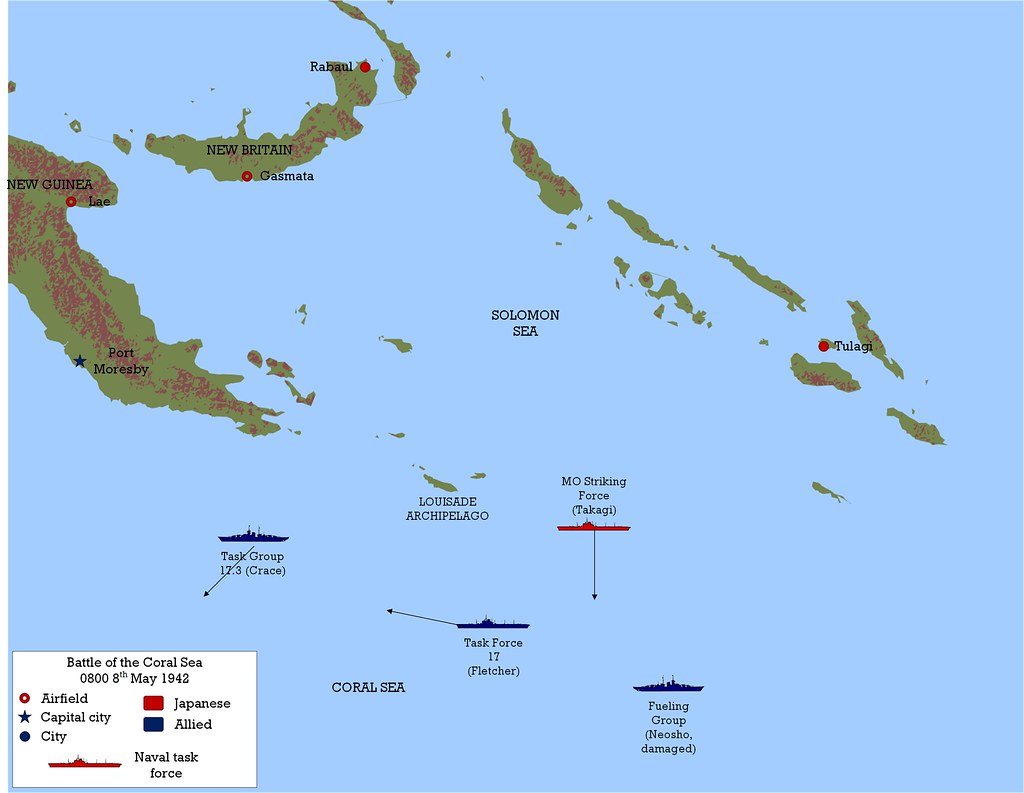
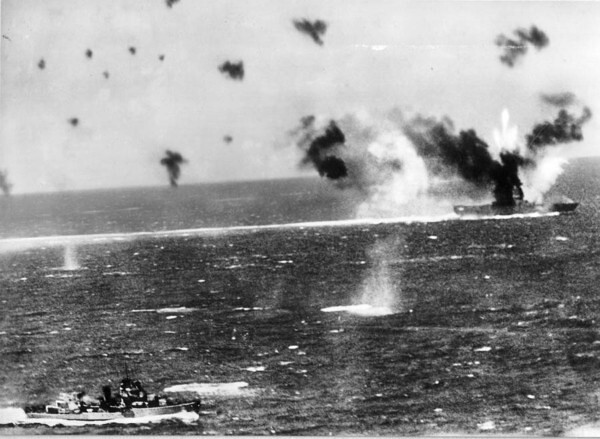
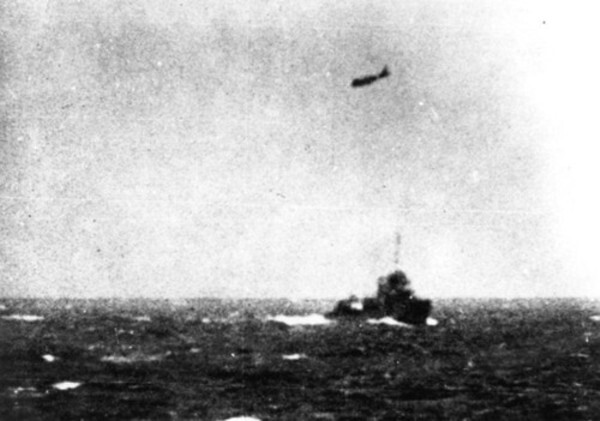

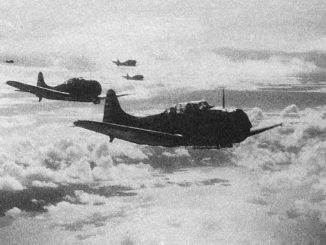
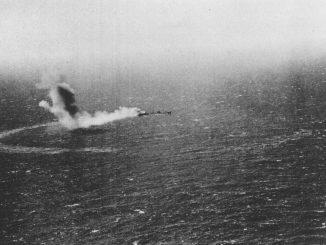
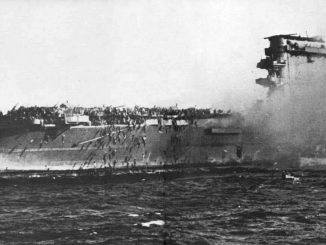
Leave a Reply